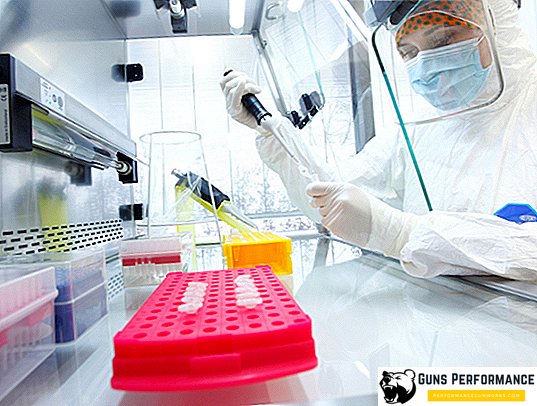On February 27, 2018, the World Health Organization published a list of the most dangerous microbes on our planet. Recent studies by Russian scientists have confirmed the presence of three of them in our country. They are dangerous for people that endure the effects of antibiotics.
The search for such bacteria was done by Sergey Sidorenko, who is the main microbiologist of St. Petersburg. According to him, the list was expected, as domestic experts have long been engaged in the search for such threats. The sad news is that some of them are in Russia. Resuscitators from all over the country claim that they are increasingly facing infections that are not treated with antibiotics.

Who was found in Russia?
The first information about the helplessness of antibiotics appeared in the 90s of the last century. The first full document, similar to the WHO list, was prepared and published in the USA in 2013. The list is compiled to ensure that medical organizations from around the world reorient the direction of their developments. The most dangerous of them (they were found in our country) are the bacterium of acinetobacter (the causative agent of meningitis), the blue pus bacillus (causes abscesses and suppurations) and enterobacteria (causes infection of the blood).
Isolated cases of their appearance in Russia have been registered for a long time. Documents were sent from all over the country, which allowed to keep statistics. In recent years, the frequency of their appearance has increased. Now their geography includes 15 cities, in the list of which - Moscow, St. Petersburg and Smolensk. It speaks of the mass phenomenon.

The problem of data accounting
It is impossible to determine the scale of danger completely in the current reality. This is related to the statistics system that is used by the Ministry of Health. For example, if a patient enters the hospital after a heart attack, he begins to develop pneumonia, and he dies, then a heart attack will be recorded in the cause of death column. In fact, death is caused by pneumonia, but the basic diagnosis with which the patient was admitted is recorded. Due to such circumstances, it is impossible to keep accurate records. To remedy the situation, you need to recycle the statistical system.
Despite this, the specialists managed to get some picture using the data from the information and analysis center of the health committee. Of these, it became clear that about 10% of Klebsiella bacteria, which cause intestinal upset, can withstand the effects of modern antibiotics. The picture is incomplete, but even such data makes you wonder.

How to protect the antibiotic from the attack of bacteria?
Bacteria have learned to resist the latest generation of antibiotics - carbapenes. This group is considered the most effective these days. Based on it, four expensive drugs have been developed that are offered on the market. Their main advantage is a wide spectrum of action. A doctor with a patient with an infection that threatened his life could prescribe one of these drugs. At the same time, precious time was not spent on determining the infection. Bacteria have developed a special enzyme that destroys the antibiotic. This is a major concern in the medical community.
There is no alternative. This forces the use of outdated drugs with a higher level of toxicity and a narrow spectrum of action. Now experts are engaged in the development of the combined substance - carbapenene will protect a special molecule that will protect it from destruction by the enzyme. In Europe, these drugs have undergone the necessary checks and are used by medical institutions. Scientists plan to release such a drug in our country until the end of 2018. They also hope that the registration process will be significantly reduced due to the urgent need (this approach is used in European countries).
How is the protection of bacteria?
Recently, scientists believed that protected infections occur in a hospital setting. Then it turned out that the bacterium can produce protective enzymes outside of medical facilities. India is a good example. There the bacteria evolve in the conditions of the city. Often, tourists who return from India are carriers of an infection that is protected from the effects of the latest generation of antibiotics.
The cause of the trouble was the free distribution of cheap drugs and poor hygiene. This combination is an ideal environment in which bacteria can develop protection against threats to their own lives.
Evolution on the march
In Russia, it is necessary to create a proper protection system. According to Sergei Sidorenko, patients admitted to their institute from the hospital are checked for the presence of resistant microbes. If confirmed, they are completely isolated. The main thing in this situation is to prevent the infection from spreading. In Western countries, hospitals are built according to the type of infection department: each house is isolated and has its own restroom. In Russia, such a system is not built, while in hospitals there is one latrine for the entire department.
Experts understand that the modernization of antibiotics is required constantly. This is a real race with evolution. It is impossible to create a medicine that can always withstand new threats. They evolve, find "keys" to the created protection. Scientists urge to increase investment in this area in order to create high-quality drugs that will operate for a long time.

Full list of the most dangerous bacteria
The list was published on February 27, 2018. It includes the 12 most dangerous bacteria that have the greatest resistance to antibiotics. Bacteria are divided into three groups (critical, high, and medium priorities).
The first category includes those who are able to withstand the effects of the most powerful preparations of the last generation (Acinetobacter baumannii, Pseudomonas aeruginosa and Enterobacteriaceae). This includes bacteria that cause severe or fatal infections (pneumonia or blood poisoning). For the treatment of some of them use the patient's blood transfusion.
Bacteria that lead to food poisoning and gonorrhea (Enterococcus faecium, Staphylococcus aureus, Helicobacter pylori, Campylobacter, Salmonellae and Neisseria gonorrhoeae) are classified in the second category. The third group included those that are able to withstand broad-spectrum drugs (Streptococcus pneumoniae, Haemophilus influenzae and Shigella). The bacteria that cause chlamydia and tuberculosis were not included in the list, as now medicine has effective tools for treating these ailments.












